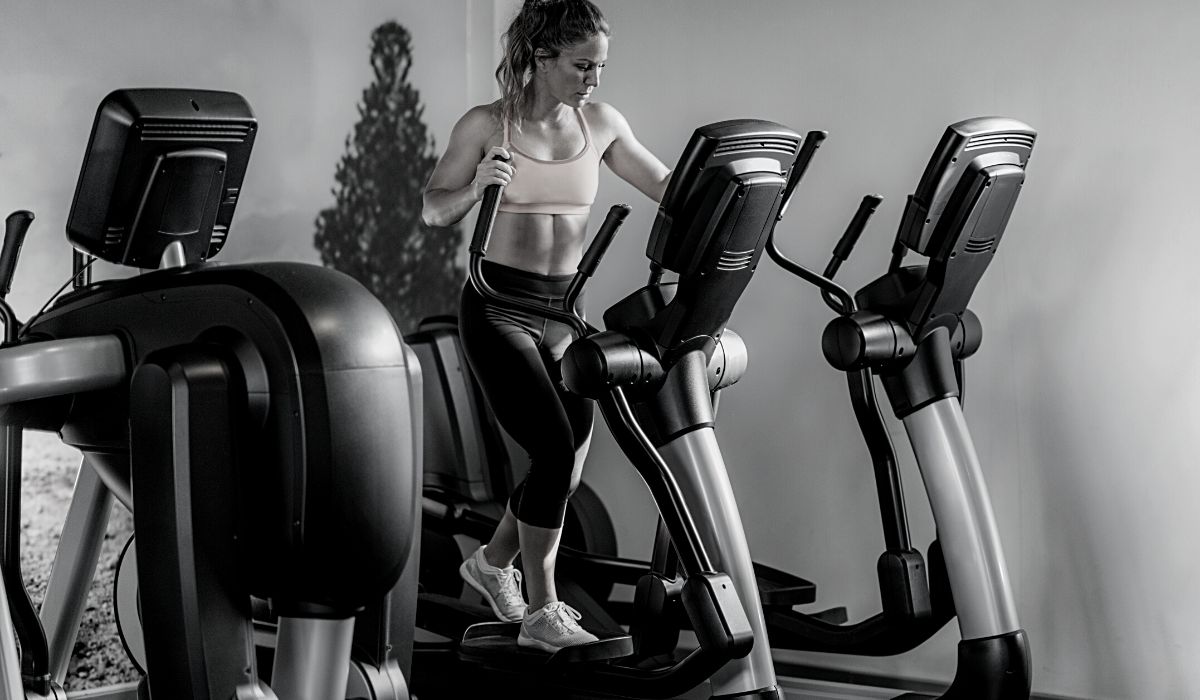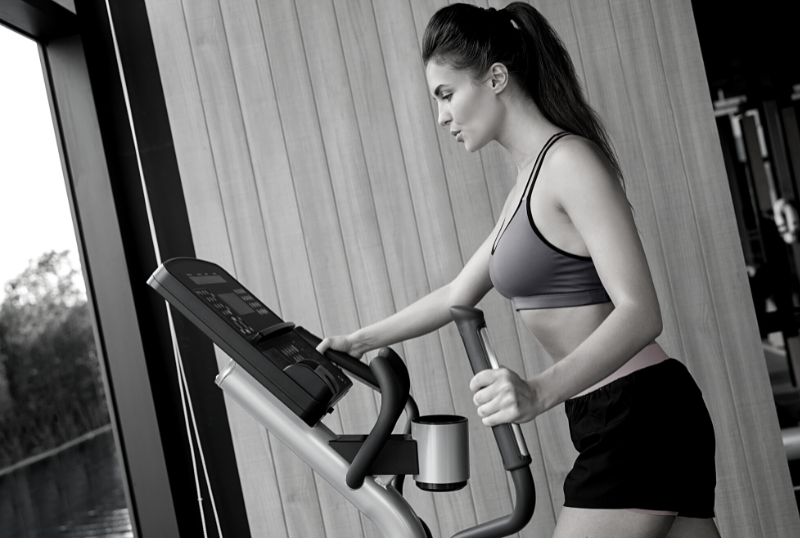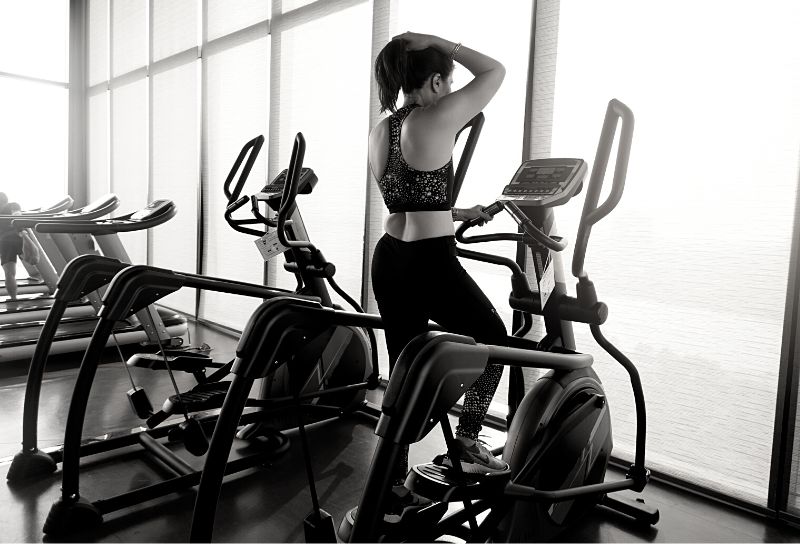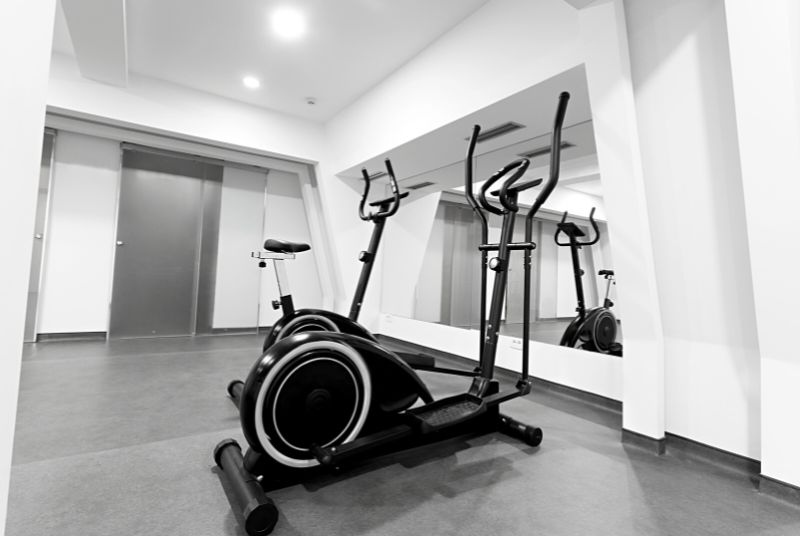The elliptical is an awesome cardio machine for losing weight in the gym. Here’s a detailed guide on how to use it for maximum effectiveness, whether you are trying to lose weight, get in shape, or burn more fat.

The elliptical machine is one of the most versatile of the cardio machines in the gym, not to mention one of the most effective.
If used correctly, that is!
Like every machine, there is a certain form you have to master, very much a “right” way to use it and “wrong” way that will diminish the effectiveness of the workout.
Below, we’ll walk you through the basics of how to use the elliptical machine like a pro, teaching you the form, the right techniques to use, even a few useful tips and tricks to help you make the most of every training session.
Let’s jump in.
How to Use the Elliptical Properly
In past articles, we’ve talked a lot about the benefits of elliptical trainers and looked how many calories burned on the elliptical machine you can expect, so we won’t cover that familiar ground.
Instead, we’re going to focus entirely on how to use the machine properly, starting off with the basics: posture and form.
Note: For the sake of clarity, in this article, we’ll refer to posture as the way you stand, and form as the way you move.
You’ve got to start off with the right posture before you can master the correct form through the full range of motion.

How to Use the Elliptical — The Right Posture
Before you start any workout, you’ve got to make sure that you’re standing correctly. In fact, this applies to every aspect of your life!
If you don’t stand correctly—but you slouch or hunch—you will encourage a curvature in your spine and a droop in your shoulders that can compromise the development of your muscles and accelerate the deterioration of your spine.
Over time, poor posture when standing (and sitting and lying down, of course) can lead to skeletomuscular problems and reduce your joint mobility.
To keep it simple, we’ll just focus on how you should stand on the elliptical before you even start moving.
Here are the basics:
- Stand with your head up and shoulders rolled back.
- Keep your spine straight and the muscles in your stomach engaged to maintain an upright posture.
- Keep your butt tucked in to help maintain the straight spine.
- Keep your knees slightly bent and loose, with enough flex to keep your body moving easily.
- Stand with your feet at a comfortable distance apart, usually about shoulder width.
Do this, and you’ll stand better in every area of your life, both on and off the elliptical machine.

How to Use the Elliptical — The Proper Form
Now that you’ve mastered the posture, it’s time to move on to the form.
Once you get moving, your body will conform to your pedaling/striding motion, as well as working the handles.
The correct form will ensure a more effective workout.
For better posture in any workout—be it a low-impact cardio session or a elliptical trainer HIIT workout—try:
Keeping your posture upright.
This involves standing tall with your head up and shoulder blades back. Keep your face pointed straight ahead with your chin at a natural point.
Fight the urge to lean/bend forward when pedaling, but try to stay as straight as possible.
Relax your shoulders and arms.
You’ll have to move your arms to work the handles (especially if you’re trying to focus more on your upper body), but that doesn’t mean you should tense up your shoulders arm muscles.
Instead, keep your shoulders relaxed and back, and your elbows loose. Too much tension in your arms and shoulders can increase fatigue and cause discomfort.
Grip the handlebars right.
If you’re trying to focus on your upper body, grip the handles tightly and use your upper body muscles to work them, reducing the engagement of your legs.
However, if your focus is on your lower body, keep your grip on the handles relaxed and your fingers loose to reduce engagement of the arm and shoulder muscles.
Keep your spine straight and hips aligned.
Make sure that you’re standing tall, and squeeze your abs and glutes gently to engage you’re his and keep them in alignment with your back.
This will prevent over-extension of your spine, improve your posture, and activate the core and lower body muscles that you want to train.
Doing this is a key to building glutes on the elliptical.
Keep your knees straight.
As your leg muscles fatigue over the course of your workout, it’s common for your knees to start flaring outward to increase hip muscle engagement to add support to the legs.
But this can be a VERY bad thing! You want to keep your knees as straight as possible tracking directly over your toes with every step.
This helps to improve your walking form and strengthens your leg muscles without causing hip fatigue.
Move those feet correctly.
When you move your foot forward, your heel should lift slightly off the pedal and your weight shifts onto the ball of your foot.
As you drive forward through the ball of your foot, your front heel sets down and your weight shifts onto your front foot.
Your back foot should stay flat on the pedal so your hamstrings can engage to cycle the pedal and keep your body supported until your weight shifts to your front foot.
Keep the natural rhythm.
At first, the movement may feel a bit awkward, because it’s not quite walking and not quite cycling.
But pay attention to the smooth, rhythmic motion, and you’ll find that it can actually be quite easy to settle onto over time.
Try to keep your gait as smooth as possible to keep that natural rhythm for the duration of your workout.
And just like that, you’ve got the right form down!

How to Use the Elliptical — Pro Tips for Success
Time to take it to the next level!
Now that you’ve mastered the basics, here are a few tips to help you use the elliptical like a pro and really get the most out of every training session:
Add in Some High-Speed Intervals
The temptation will be to settle into a routine where you’re basically walking at a fairly slow or moderate pace. This will be easy to sustain for a full hour, but won’t really give you a great workout.
Instead, try mixing in some high-speed intervals where you pedal at top speed, or high-resistance intervals where you increase the resistance to make the pedaling as difficult as possible.
The ability to easily speed up your pace and increase the resistance makes the elliptical one of the best HIIT machines in the gym, and gives you a truly excellent workout to burn serious fat and calories!
Switch Up the Focus
Don’t just pay attention to your legs. Instead, focus on your entire body.
If you look at a list of the muscles worked on the elliptical machine, you’ll see it works everything—from your chest and back to your shoulders to your arms, down to your core, and ultimately your legs.
Switching up between the various body parts is actually fairly simple:
- Reduce the pedaling of your legs and let your arms do more of the work for greater upper body engagement.
- Tighten your core and pay attention to how you twist your upper body in contrast to the movement of your lower body.
- Squat-walk to maximize your quad and glute workout.
Changing up your workout will be a game-changer and make full use of this highly versatile machine.
Add Incline
The elliptical is one of the best cardio machines for glutes because you can add an incline and maximize the engagement of your glute muscles.
Some machines (like elliptical cross trainers) can work almost as well as stair-climbing machines to hammer your glutes.
Raise the incline to the max, add a bit of resistance, and get pedaling. You’re guaranteed to feel the burn in your glutes in no time.
Walk Backwards
Did you know that going backwards on elliptical is actually incredible for strengthening the muscles in your lower quads that help to reinforce your knees?
If you’ve got knee problems or are recovering from knee injuries or surgeries, switching up to walk backwards on the elliptical is an amazing tool for rehab.
Plus, it’s more quad-focused, and can help to train your body to balance in an unusual range of motion.
Go Hands-Free
If you really want to strengthen your core and improve your balance, try walking without holding onto the handles. You’ll find it’s a lot harder than you’d expect!
The movement on the elliptical doesn’t feel quite “natural”, so your body won’t be accustomed to it. By training your body through this instability, it increases your agility and improves your balance.
You’ll find that translates into better overall athletic performance and greater stability in every exercise you do.
Push the Pace
Don’t just settle for an “easy” walk on the elliptical, but really push yourself by speeding up the pace, adding some resistance or incline, or mixing in intervals.
The harder you work, the more effective the machine will be to help you drop pounds.
Losing weight with an elliptical doesn’t necessarily have to involve hour-long (or longer) training sessions. If you push hard, you’ll find that 30-minute elliptical workouts are really all you need to burn enough calories.
Pair with Resistance Training
Even better: try adding in the elliptical workout after your regular resistance training session.
With all the calories you’ve burned lifting weights, your body will be forced to use largely fat calories (as opposed to the more readily available and easily burned sugar-based calories). This will translate into better long-term fat loss!
The Bottom Line
At the end of the day, your elliptical workouts are what you make of them. Put in the time and effort, and you’ll see results.
Go easy, and you’ll see some results but never really make a dent in your fitness and weight loss goals.
The advice above will help you not only master the basics of posture and form, but make it easy to take every elliptical workout to the next level.
Step up the difficulty a notch or two using the “pro-level” advice above, and you’re all but guaranteed to see real results and gains in your overall health and fitness.
More Elliptical Guides Like This
The Different Types of Elliptical Machines (Pros and Cons of Each). The elliptical machine is one of the best tools for achieving your weight loss goals. Here’s a look at each type of elliptical machine, including the pros and cons of each, so that you can use the right one for you and your training goals.
How Much Do Ellipticals Cost? (44 Different Models Compared). Ellipticals can be a costly investment in your workout goals. Here is a look at how much each type of elliptical costs and how much to spend on one.